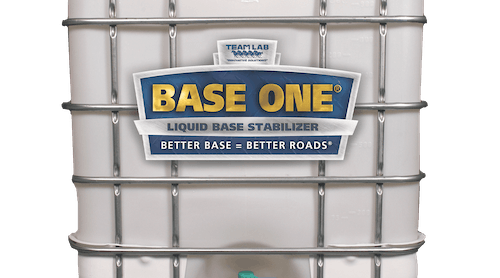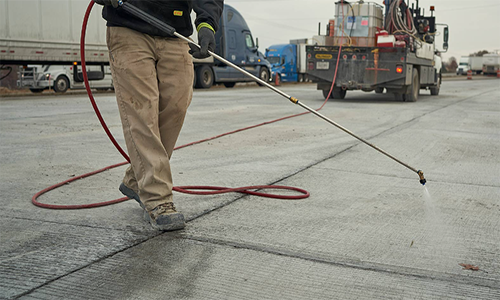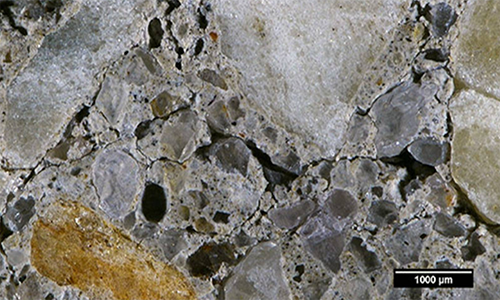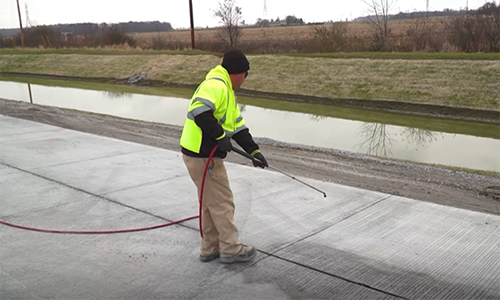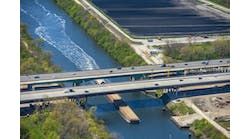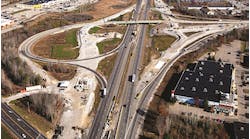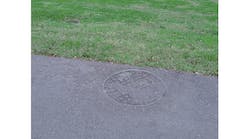By Brent Burwell, Contributing Author
Having durable highway pavements is of the utmost importance for departments of transportation around the country. But how can it be achieved?
Getting longer service life out of highway pavement is more than an economic imperative; increasingly, it is a matter of sustainability and resiliency, as well. When a life-cycle approach is taken—that is, an approach that includes not only pavement design and materials phases, but construction and end-of-life phases, as well—there is a clear benefit in continuing to utilize an in-place structure for as long as is feasible.
Concrete pavements offer long-life design and do not need to be regularly replaced, making concrete an excellent choice.
Every newly installed pavement has an expected design life. Pavement thickness is the determining factor, since thickness is what enables the structure to carry loads. In recent years, state DOTs have been successful in developing 30-year pavement design lives for their interstates and highways, as compared to the 20-year designs from earlier decades.
But many existing concrete pavements have remained in good condition much longer than that, with 40 and 50 years of service being cited in various states (see sidebar).
However, achieving a long service life shouldn’t be considered a matter of chance. Maintenance activities—and a defined maintenance schedule—dramatically improve outcomes. As part of their defined maintenance approach, DOTs or other road owners should identify what constitutes the end of a pavement’s life, quantifying the type and number of distresses that will trigger rehabilitation (for example, setting target numbers such as 15% cracked slabs).
Root Causes of Distress
Maintenance activities will be most successful if they address underlying causes of pavement distress. To ensure the proper repair techniques are selected, DOT or other personnel should first perform a preliminary assessment of the pavement in question, similar to “triage.” Visual inspection at close range—not from a vehicle—usually suffices.
A common form of distress seen on concrete pavements is cracking—but not all cracks require the same treatment. Corner cracks generally require the earliest intervention, followed by transverse cracks.
Intersecting cracks, which result in shattered or broken slabs, will require the most intervention, since broken slabs lose their stability under loading.
The reasons for the cracks that result in broken slabs can include fatigue and settlement for older pavements. For some newer pavements, it may indicate that saw cutting was performed too late in the curing process or that cuts were too shallow. The cracking may also indicate misplacement of dowel bars.
Joint spalling is another form of distress. It may cause incompressible rocks (or other hard forms of debris) to infiltrate the joint area, building up expansive stresses.
Misaligned dowel bars are another potential cause of joint spalling. A related distress is loss of seal at the joints, which allows water to infiltrate and weaken the subgrade. Faulting—a change in elevation across a transverse joint or crack—can result when load transfer at joints is insufficient or when there is an issue with base support conditions.
Finally, pavement roughness is a distress that requires remedy, since smooth pavements last longer, are safer, provide better ride quality and even lower vehicle fuel consumption by decreasing rolling resistance.
Repair Techniques
Pavement repair techniques are not one-size-fits-all. Achieving optimal pavement life will depend upon performing maintenance that correctly addresses underlying problems.
For concrete pavements, these techniques include full- and partial-depth repairs, dowel bar retrofit, crack stitching, joint resealing, and diamond grinding.
Full-depth repair (FDR) is used to fix shattered slabs, corner breaks and joints with limited load transfer capability. It entails removing and replacing at least a portion of the slab full depth.
FDR can be completed on both jointed and continuously reinforced concrete pavement. On jointed pavement, the transverse construction joints at the patch ends are typically doweled to restore load transfer across the joints. On longer patch sections, dowel bar assemblies are placed at intervals to coincide with the existing transverse joint pattern present.
On continuously reinforced concrete, the reinforcing steel pattern of the existing pavement is removed and replaced with new steel within the repair section. FDR provides high joint load transfer efficiency and can extend pavement service life up to 20 years.
Partial-depth repair (PDR) is a shallow procedure used to address pavement deterioration that does not fully extend through a concrete slab.
By replacing unsound concrete, PDR can repair spalling and fraying of slab edges at joints and cracks as well as localized scaling. Like FDR, PDR can last more than 20 years when properly constructed using quality materials and workmanship.
Dowel bar retrofit (DBR), used to address or prevent faulting, restores load transfer across transverse joints and cracks. The process involves cutting slots and inserting round steel bars that link adjoining slabs and prevent their differential vertical movement.
DBR is a good choice for pavements that exhibit load transfer below 60% or where joint and crack faulting is between one-eighth to three-fourth inch. It can be used on transverse cracks that are reasonably tight with minimal spalling.
Longitudinal cracks can be repaired using cross- and/or slot-stitching. Stitching provides reinforcement across the crack and helps maintain aggregate interlock, inhibiting future widening. Cross-stitching uses deformed tie bars epoxied or grouted into holes drilled at an angle through a crack, whereas with slot-stitching the bars are grouted into slots cut across the crack. Cross- and slot-stitching should be used on pavements that are in reasonably good condition.
In pavements where joints have previously been sealed, resealing them is an important part of pavement preservation. This is because joints designed with widened reservoirs, which are necessary to contain sealants, can more easily be penetrated by water and incompressible objects than narrower, unsealed joints, leading to greater damage from compression forces.
There are two primary categories of joint sealant materials for roadways: preformed neoprene compression seals and formed-in-place sealants that are in a liquid state prior to installation.
Diamond grinding removes joint faulting, slab warping, studded-tire wear, and unevenness resulting from patches. It creates a smooth, uniform pavement profile that has improved macro-texture and skid resistance.
Diamond grinding can be used as a spot treatment to fix small local issues in structurally sound concrete pavement. It can also be used in conjunction with other concrete pavement preservation treatments to blend patching and other surface irregularities into a consistent surface.
Concrete pavement preservation techniques should be performed before distresses progress to the point where structural strength is compromised. Inspecting roads regularly and implementing repairs that address underlying problems can extend a pavement’s life for years, even decades. And as concerns escalate regarding sustainability and resiliency during extreme weather or flooding events, additional years of service and safety—achieved at an extremely competitive economic cost—are invaluable. R&B
Brent Burwell is the executive director of the Oklahoma/Arkansas Chapter of the American Concrete Pavement Association


